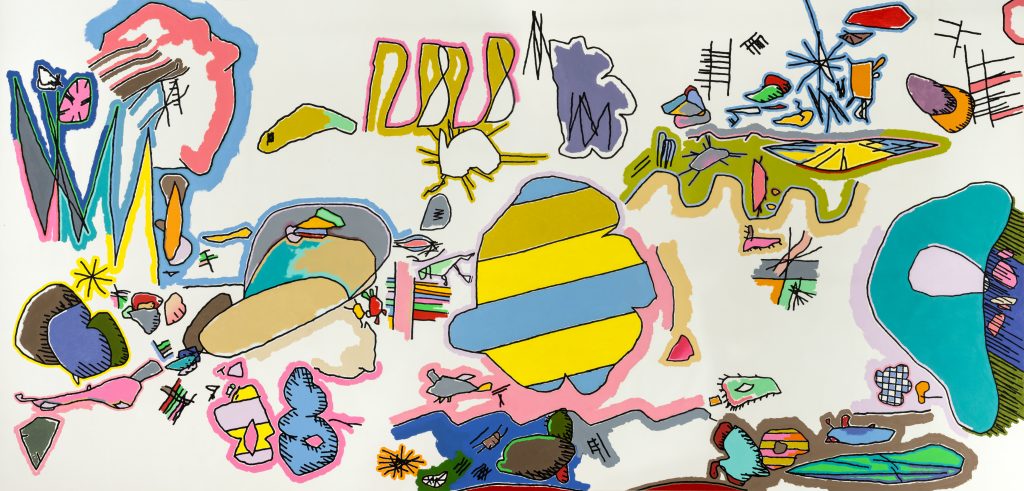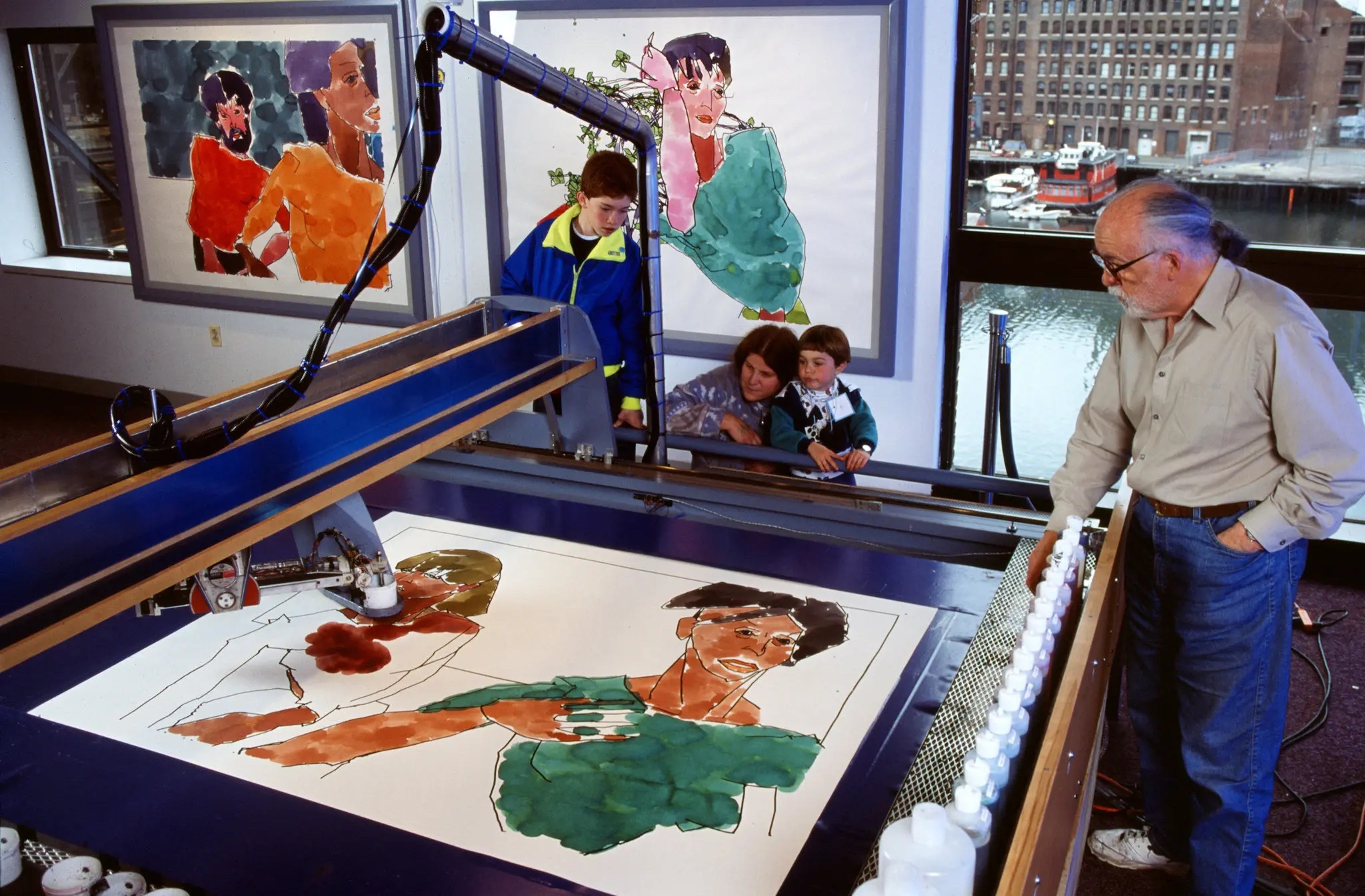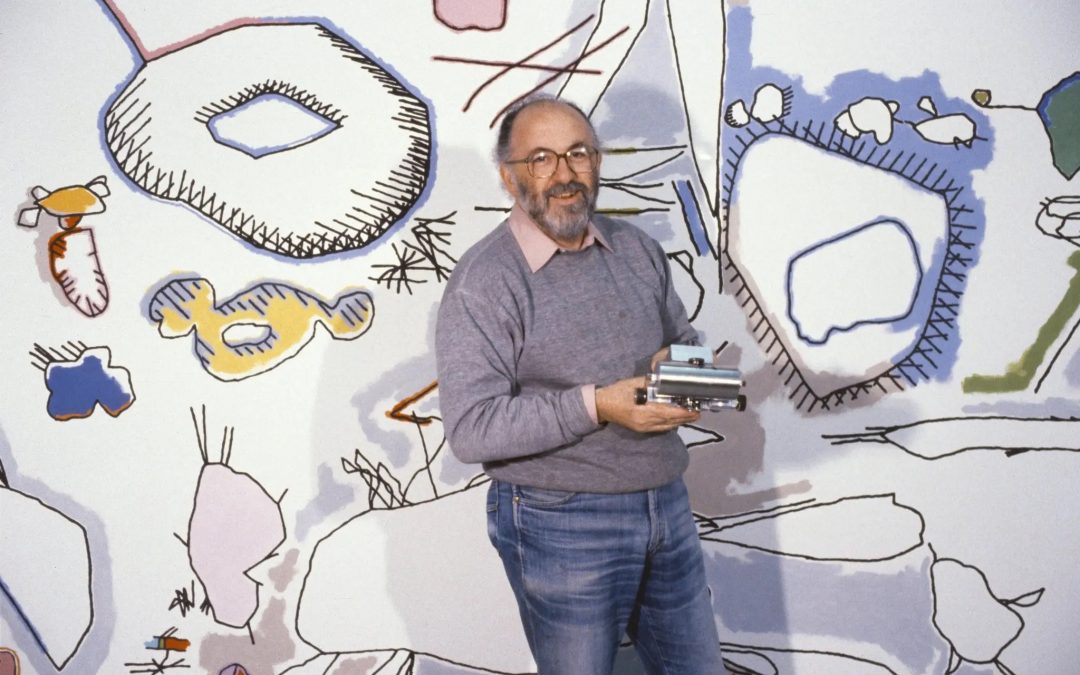The founder of AI Art: Harold Cohen and AARON
Speaking about the current debate on artificial intelligence, the work of British artist Harold Cohen (1929-2016) poses the basis of this new creative practice. Painter, printmaker and graphic designer, he is better known for his most important creation, AARON, a computer program based on an artificial intelligence prototype, capable to generate works of art. These may be considered as some of the first examples of computer-generated art.

Harold Cohen, Untitled, 1981
Courtesy Outland
After a brief period as a more established artist, Cohen was introduced to the world of computer programming: after a period as visiting scholar at the Artificial Intelligence Laboratory at Stanford in 1971, he has begun to imagine and create a program to codify the pictorial act, naming it AARON. This idea, conceived in 1973, is the result of a broader question that Cohen was asking himself: understanding what Art is.
The “education” of AARON has followed a similar path to one of humans, through the help of a robot called “Turtle” for the production of images in the real world. In his first period of life, AARON was capable to produce only monochromatic lines without any iconographic reference. These were in a first moment coloured by Cohen himself. After the iteration of the program through the years, the artist was then capable to add more sophisticated aspects to representation, like the creation of the human figure in the ’80s and the addition of colours in the ’90s.
All these passages were possible thanks to the creation of a “memory” which could help AARON to remember past actions and act in the present, take autonomous artistic decisions and follow precise instructions. The difficulty resides in the “blindness” of the computerized system: whereas humans’ cognitive systems develop by recourse to an external “real world,” an AI’s cognitive system has no external world to apply it to. AARON had to learn to see in the dark.

Harold Cohen with an AARON installation at San Diego Museum
Courtesy Harold Cohen Estate
Teaching to a computer program how to take decisions was the work of a lifetime for Cohen. Unlike most recent forms of AI for the creation of images based on text input, the implications of AARON’s work have always been more conceptual than concretely “useful”. It is this specific characteristic that has made Cohen one of the computer-generated art fathers.

